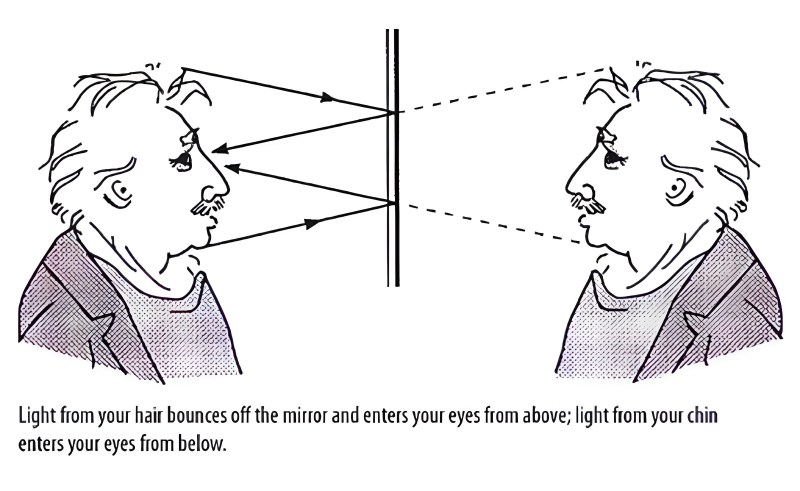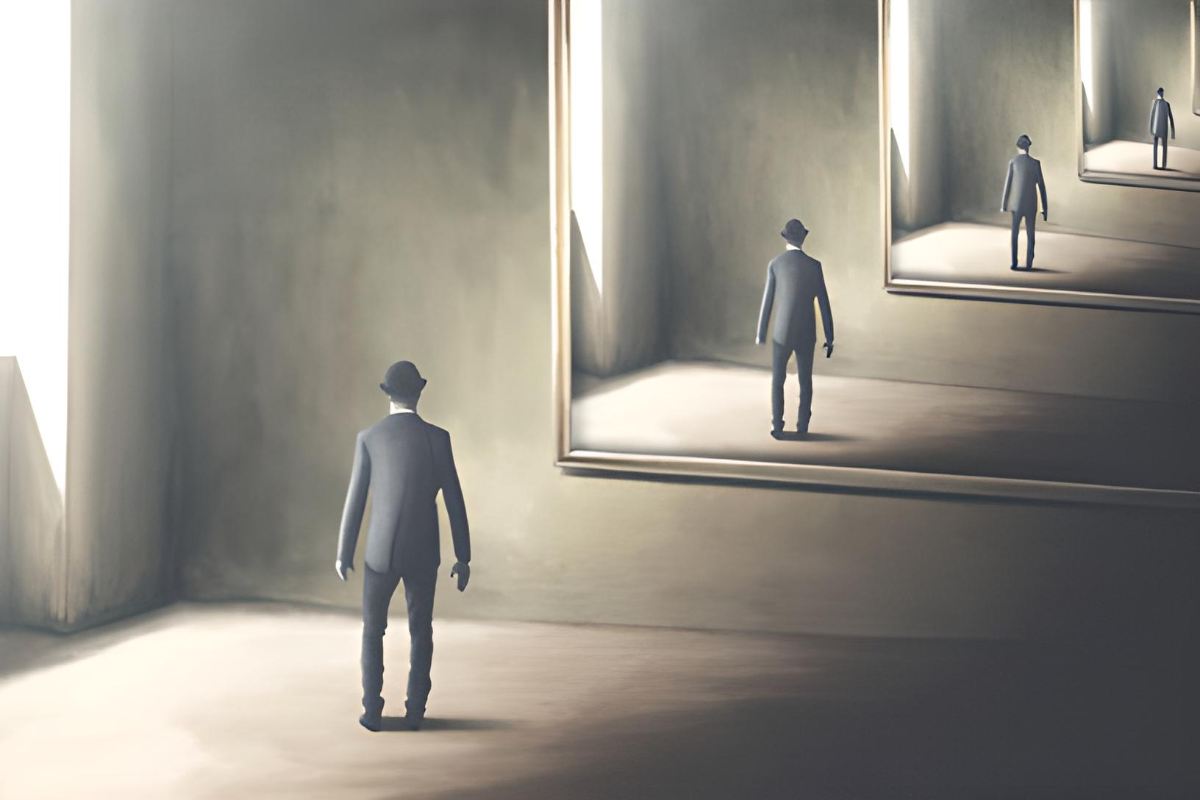Imagine a world devoid of mirrors. Extremely unlikely. A mirror is an essential tool in our daily lives. Many of us would be very inhibited in our public activities if we did not have it. A mole that is on the right side of your face, can appear on the left when you look in the mirror. Does the mirror even reflect reality? The mirrors are structured to distort reality. Let’s see why.
We have long been in the habit of looking at ourselves in the mirror upon waking, after washing our hands, in the elevator, and before and after we brush our teeth. Despite this, how we view ourselves in the mirror isn’t always how others see us. When seen in a mirror, our right and left sides seem to be switched.
It Is About the Smoothness
But the question is, why does a mirror reflect at all? Typically, a mirror will have two distinct layers. Aluminum makes up the base, while glass makes up the upper layer. The mirror is protected by glass, and the reflection is provided by an aluminum coating. The aluminum layer is so smooth that it allows for such precise reflection.
But in theory, we can also see ourselves reflected in any other smooth surface. As in the case of a freshly painted automobile or the screen of a smartphone. Plaster walls are treated differently. Because of its irregular surface, it scatters and sometimes absorbs light.
One unique property of mirror surfaces is that they reflect light at exactly the same angle at which it was incident. This means that even when a lot of light beams are combined, the result is still a symmetrical image. Now, when we look at ourselves in a mirror, those distorted rays enter our retina and our brain forms a picture from them.
Not Even Close

When we compare our mirror image to a photograph of ourselves, we notice tiny variations, such as the fact that our reflection seems to be twice as far away from us as the mirror. In addition, our mole has switched sides and is now on the other side of the face.
The mirror fools our brains into giving us a distorted reflection of our true appearance. The brain understands that light rays can only travel in a straight line and uses this knowledge to determine the location and distance of things in space. Mirrors, on the other hand, are reflecting the light back into its source again. Our brain is now thrown off since it doesn’t realize the twist that the light has now bent.
The brain interprets the direction from which a beam of light enters the eye and ignores everything else. For this reason, when we look at ourselves in the mirror, it often seems as if we are looking at each other from a considerable distance.
Is Our Mirror Image Reversed?
It’s not reversed. This is evident from the fact that the mirror would also have to reverse the top and bottom of the reflection. However, that is not what it does. A model standing opposite us would have a distinct appearance from our mirrored image.
The latter would allow us to glimpse the mole from the opposite angle. Because when you look in a mirror, you just see things backward. Nothing is actually switching from left to right or up to down. On the contrary, it’s being turned backward.
Light particles, or photons, head toward the glass and scatter off of its smooth surface. They follow the same route they took to the mirror, which results in everything in the mirror’s field of view being mirrored backward.
The mirror switches the rear and front dimensions. It is easier to understand this with a model in the coordinate system. For this, we consider that we just mirror the model’s horizontal axis and not its vertical axis. When we do this, we get a reflection that is identical to what we see in the mirror.
The brain is therefore misled a second time. Only one dimension is swapped by the mirror, not the others. We may turn in any direction, but the mirror image will never be congruent with us. Our reflection in the mirror is called “mirror-inverted,” disproving the myth that it is sideways.


